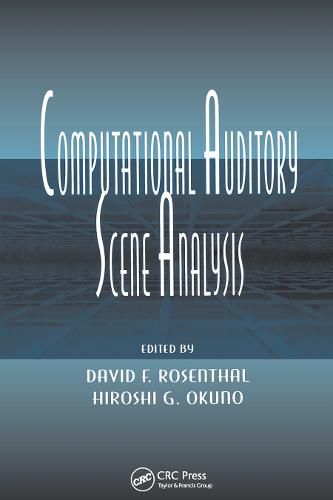Readings Newsletter
Become a Readings Member to make your shopping experience even easier.
Sign in or sign up for free!
You’re not far away from qualifying for FREE standard shipping within Australia
You’ve qualified for FREE standard shipping within Australia
The cart is loading…






The interest of AI in problems related to understanding sounds has a rich history dating back to the ARPA Speech Understanding Project in the 1970s. While a great deal has been learned from this and subsequent speech understanding research, the goal of building systems that can understand general acoustic signals–continuous speech and/or non-speech sounds–from unconstrained environments is still unrealized. Instead, there are now systems that understand clean speech well in relatively noiseless laboratory environments, but that break down in more realistic, noisier environments. As seen in the cocktail-party effect, humans and other mammals have the ability to selectively attend to sound from a particular source, even when it is mixed with other sounds. Computers also need to be able to decide which parts of a mixed acoustic signal are relevant to a particular purpose–which part should be interpreted as speech, and which should be interpreted as a door closing, an air conditioner humming, or another person interrupting.
Observations such as these have led a number of researchers to conclude that research on speech understanding and on nonspeech understanding need to be united within a more general framework. Researchers have also begun trying to understand computational auditory frameworks as parts of larger perception systems whose purpose is to give a computer integrated information about the real world. Inspiration for this work ranges from research on how different sensors can be integrated to models of how humans’ auditory apparatus works in concert with vision, proprioception, etc. Representing some of the most advanced work on computers understanding speech, this collection of papers covers the work being done to integrate speech and nonspeech understanding in computer systems.
$9.00 standard shipping within Australia
FREE standard shipping within Australia for orders over $100.00
Express & International shipping calculated at checkout
The interest of AI in problems related to understanding sounds has a rich history dating back to the ARPA Speech Understanding Project in the 1970s. While a great deal has been learned from this and subsequent speech understanding research, the goal of building systems that can understand general acoustic signals–continuous speech and/or non-speech sounds–from unconstrained environments is still unrealized. Instead, there are now systems that understand clean speech well in relatively noiseless laboratory environments, but that break down in more realistic, noisier environments. As seen in the cocktail-party effect, humans and other mammals have the ability to selectively attend to sound from a particular source, even when it is mixed with other sounds. Computers also need to be able to decide which parts of a mixed acoustic signal are relevant to a particular purpose–which part should be interpreted as speech, and which should be interpreted as a door closing, an air conditioner humming, or another person interrupting.
Observations such as these have led a number of researchers to conclude that research on speech understanding and on nonspeech understanding need to be united within a more general framework. Researchers have also begun trying to understand computational auditory frameworks as parts of larger perception systems whose purpose is to give a computer integrated information about the real world. Inspiration for this work ranges from research on how different sensors can be integrated to models of how humans’ auditory apparatus works in concert with vision, proprioception, etc. Representing some of the most advanced work on computers understanding speech, this collection of papers covers the work being done to integrate speech and nonspeech understanding in computer systems.